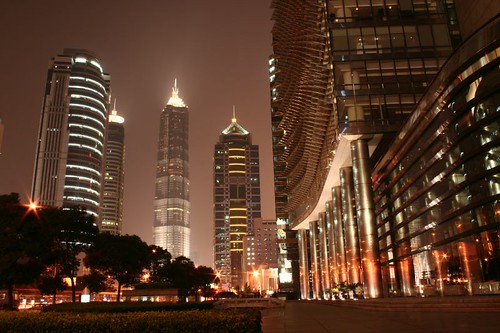Happy Thanksgiving!
The first month in Shanghai gave me some interesting learning experience about how financial systems are working here. I must say the breadth of financial products have been broadened significantly compared to when I left the city three and half years ago. As promised, I'm going to write a series of articles to explain the different between various personal finance aspects in China vs those in the States, and we will start with credit and debit cards.
Card Is Prevalent
Debit cards and credit cards are more than abundant among the working class: everyone I see has at least five cards in the wallet, and at least one or two of them are credit cards in US definition(revolving credit, interest-free grace period, etc.). Major banks are competing for credit card businesses: you can even see employees from banks literally peddling credit cards at major public transportation stations ... one will still have to go through a credit verification process to get the card, but it seems that everyone with a US$150/month job can easily get a card from major banks. On the other hand, credit limit is constrained. A limit of US$2,500 is usually seen as very high limit.
Card Acceptance Is a Problem
However, merchants here still have a long way to go before realizing the benefit of accepting cards vs cash. Banks charge about 1.5% for credit card or debit card payments, and many merchants are relunctant of giving the margin to the bank -- I believe given time, this can be changed as more shops start to discover card-paying customers generates more revenue.
For now, you should still expect that some times cards are not accepted. In the last week alone, I had to pay cash for a US$250 laser printer and a US$100 meal. It is still by and large a cash society (and consider it to be painful because the largest paper bill is 100 Yuan, or US$13.)
Unified Card Acceptance Network
All major China banks are affiliates of a domestic card payment network called China Union Pay, or Yinglian in local pronunciation. The network is similar to Visa or Mastercard in which it allows cards from any banks to be used in all card-accepting merchants.
Foreign-Issued Visa and Mastercard are generally accepted in major hotels and high-end department stores and restaurants.
It has been reported that China Union Pay is in discussing with Visa and Mastercard to open the borders so it can extend coverage to WW Visa (or Mastercard) outlets while allowing Visa (or Mastercard) to leverage its domestic network for payment.
Credit Card Business Model Still to Be Discovered
Chinese are usually savers, so most pay credit card balance in full every month, depriving banks of interest charges as a significant income stream. As such, banks generally rely on about 1.5% merchant fee to make a living. Consequently, gold card or platinum card in China really is gold and platinum, at least in terms of annual fees. A gold card generally costs $40 per annum, and a platinum card usually goes to $100. No-annual-fee reward card almost does not exist here. (Hey, I miss the generous Citibank credit card offers :-)) (No wonder it has been reported that credit card is a loss leading business in some banks.)
Does this help? Please give me some feedback before I write the other topics like online payment, insurance, banking, investment, income tax and many other topics.




